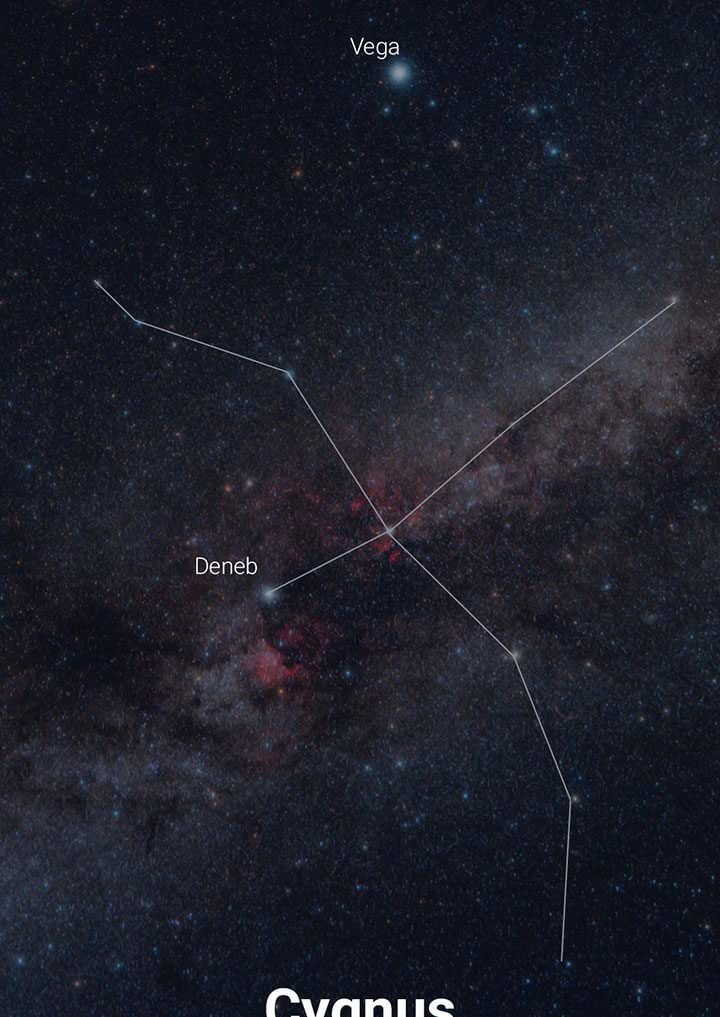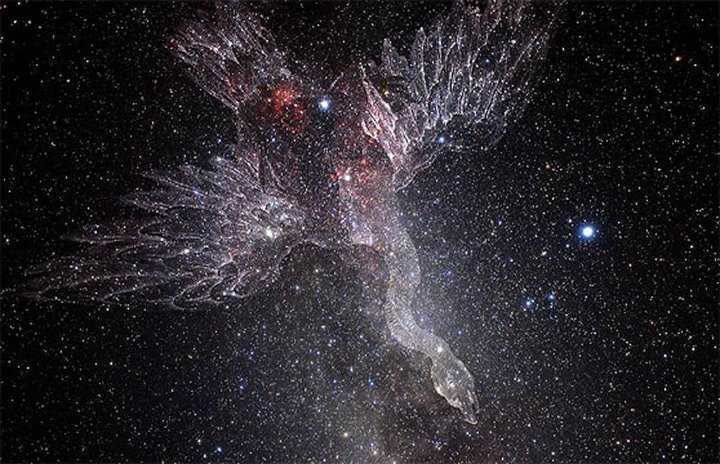
The constellation known as the Swan can be found in the starry sky of the northern hemisphere. Its bright stars form a distinctive cross-shaped pattern, known as the Northern Cross, which stretches along the Milky Way. This pattern has long been associated with flying birds, with the Babylonians referring to the constellation as the “forest bird” and the Arabs calling it the “chicken.”
In the middle latitudes of Russia, the Swan constellation can be observed throughout the year, but the optimal conditions for viewing are during the summer and early autumn seasons.
Overview of the situation
| Swan | |
| Latin name | Cygnus (gen. Cygni) |
| Abbreviation | Cyg |
| Symbol | Swan |
| Direct ascent | 19 h 05 m to 21 h 58 m |
| Declination | +27° 30′ to +60° 55′ |
| Area | 804 sq. deg. (16th place) |
| Brightest stars (magnitude < 3 m ) | Deneb (α Cyg) – 1.25 m Sadr (γ Cyg) – 2.23 m Hyenach (ε Cyg) – 2.48 m δ Cyg – 2.87 m |
| Meteor streams | October Cygnids Kappa Cygnids |
| Neighboring constellations | Cepheus Dragon Lyre Lyre Fox Pegasus Lizard |
| The constellation is visible at latitudes from +90° to -29°. The best time to observe it is July. | |

How did the Swan, which has such a strong bond with water, manage to ascend to the heavens and find its place among the stars? The answer lies in the mythology that connects the constellations of Swan and Lyra.
In ancient times, the renowned Spartan hero Tyndareus was exiled from his own kingdom by his brother Hippokontes. He wandered for many years, traversing numerous lands, yet finding no refuge. Eventually, he arrived in Aetolia and sought solace with King Testius, who not only welcomed him as an esteemed guest but also formed a deep friendship with him. In a generous gesture, Testius offered Tyndareus the hand of his beautiful daughter Leda, who was as divine as a goddess, in marriage.
Tyndareus lived a blissful life with Leda. However, it was not long before Hercules slew Hippokontes and his sons, allowing Tyndareus to return to his homeland of Sparta with Leda.
Everyone who laid eyes on Leda couldn’t help but be captivated by her astonishing beauty and irresistible charm. Word quickly spread throughout Greece that she possessed a beauty comparable to that of the immortal goddesses. Could such a breathtaking maiden possibly go unnoticed by Zeus, the king of the gods? One fateful day, Zeus caught sight of Leda and immediately began plotting a way to possess her without his ever-watchful and jealous wife, Hera, discovering his intentions. He cunningly transformed himself into a magnificent snow-white swan and gracefully descended from the lofty heights of Mount Olympus to the city of Sparta, where Leda resided.
Without fail, the all-powerful Zeus would visit Leda each night in the form of the Swan, their encounters concealed from the prying eyes of Hera. As a result of their clandestine meetings, Leda bore two extraordinary children. The first was a daughter named Helen, whose beauty rivaled that of the goddesses and whose beauty would later ignite the flames of the infamous Trojan War. The second child was a son named Polydevk, a renowned hero bestowed with the gift of immortality by his divine father, Zeus.
Two children were also born to Leda from Tyndareus – a daughter named Clytemnestra and a son named Castor.
In the celestial sphere, the constellation known as the Swan symbolizes Zeus, who transforms into a beautiful white bird and descends to Earth to be with his beloved Leda.
The primary stars of the Swan constellation
The asterism within the Swan constellation is known as the Northern Cross. It comprises of five stars: Deneb, Delta Swan, Albireo, Epsilon Swan, and Gamma Swan.
Deneb
can be rephrased as follows:
The star Deneb
.
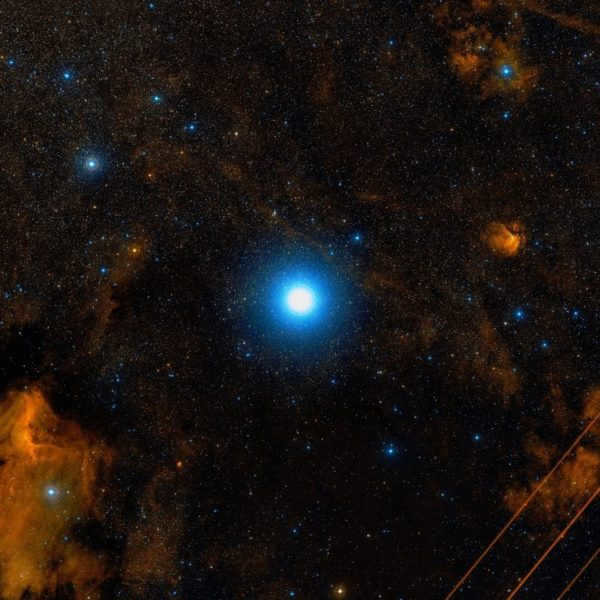
The Alpha Swan star is a supergiant of blue-white color (A2 Ia) located 1,400 light-years away. It has an apparent magnitude of 1.25, making it the brightest star in the constellation and the 19th brightest in the sky.
This star serves as a representative of the Alpha Swan variable star class. Its brightness and spectral type vary slightly due to fluctuations on its surface that are not radial in nature. The star has ceased fusing hydrogen in its core, which means it will eventually explode as a supernova in the next few million years.
With an absolute magnitude of -7.0, Alpha Swan is one of the most well-known luminous stars. It is nearly 60,000 times brighter than the sun and has a mass that is approximately 20 times greater. This star is the most distant one that shines with a magnitude of 1, and it is also renowned as one of the most notable white stars. Interestingly, on Mars, Alpha Swan serves as the north pole star.
The term “dhaneb” is derived from Arabic and refers to the appendage at the rear of an animal, specifically the tail of a chicken. In Chinese mythology, the star symbolizes the bridge or fairy associated with the “Bridge of Forty”. When combined with Altair (Eagle) and Vega (Lyra), it forms the constellation known as the “Summer-Fall Triangle”.
Sadr
Gamma Swan is an F8 (supergiant) spectral class star situated approximately 1800 light-years away. It has a visible magnitude of 2.23, making it one of the most prominent stars visible in the night sky. With a mass 12 times greater than that of the Sun, it consumes its nuclear fuel at a faster rate. The star is estimated to be around 12 million years old.
Surrounding Sadr is a diffuse emission nebula known as IC 1318. It can be found at the intersection of the Northern Cross. The name “Sadr” originates from Arabic and translates to “chest.” In Latin, it is also referred to as “Pectus Gallinae,” meaning “chicken chest.”
Epsilon of the Swan is a type K0 III orange giant star. It has an apparent visual magnitude of 2.480 and is located approximately 72.7 light-years away. This star is 62 times brighter than the Sun and has a radius 11 times larger. It is also accompanied by a companion star with a magnitude of 13. Interestingly, the name Jenah is shared with another star called Gamma Raven in the constellation of Raven. The name Jenah translates from Arabic as “wing”.
Delta of the Swan
The Swan constellation contains a remarkable triple star known as Delta. With a combined apparent visual magnitude of 2.87 and situated approximately 165 light-years away, Delta is an extraordinary celestial object. Interestingly, around the year 11250, Delta is expected to transform into Polaris, the North Star.
Delta is comprised of two closely situated stars and one more distantly positioned star. The primary star is a luminous blue-white giant (B9 III) that resides in the main sequence of stellar evolution. In its final life stage, this rapidly rotating star has an equatorial velocity of at least 135 km/s.
The second companion star is a yellow-white star (F1 V) with an apparent magnitude of 6.33. And finally, the third companion is an orange giant with a magnitude of 12. This magnificent trio of stars makes Delta a fascinating object of study for astronomers.
Albireo
is a star system in the constellation Cygnus. It is known for its beautiful double star, which consists of a yellow giant star and a blue main sequence star. This combination of colors makes Albireo a popular target for amateur astronomers. The system is located about 380 light-years away from Earth and is easily visible with binoculars or a small telescope. Albireo is also a binary system, meaning that the two stars orbit around a common center of mass. This makes it an interesting object for astronomers to study, as they can learn about the dynamics of binary star systems. Overall, Albireo is a fascinating and visually stunning star system that continues to captivate stargazers around the world.


Beta Swan, also known as the “beak star,” is a double star system that can be easily observed with a small telescope. It is situated in the constellation Cygnus, approximately 380 light-years away. This star system is located in the head of the swan and is ranked as the 5th brightest star in the constellation. It is also a part of the Northern Cross.
Albireo, on the other hand, is a fascinating star system that attracts the attention of amateur astronomers due to its unique characteristics. It consists of a yellow star with an apparent magnitude of 3.18, which is a close double star, and a faint blue companion with an apparent stellar magnitude of 5.82. These two stars are separated by 35 arc seconds. The notable contrast between the colors of the stars adds to its allure.
- Albireo A is made up of two stars that are separated by 9.4 seconds, making it difficult to observe with telescopes smaller than 20 inches. It belongs to the spectral class K3III.
Swan Zeta
Swan Zeta is a G8III spectral class star that shines with a yellow color. It is located 151 light-years away from us. With an apparent magnitude of 3.20, it is quite visible. In terms of size, Swan Zeta is 14.7 times larger than our Sun and it shines 119 times brighter. This star is considered a giant due to the fusion of helium in its core. Interestingly, it has a nearby companion, which is a white dwarf with a magnitude of 12. Together with CCDM star J21129 + 3014B, they form a binary system.
Swan Tau
Swan Tau is a binary star system composed of two stars: the yellowish-white subgiant GJ 822.1 A (F2IV) and the yellow main-sequence star GJ 822.1 B (G0V). The size, luminosity, and surface temperature of GJ 822.1 B are comparable to those of the Sun. The stars have visible magnitudes of 3.84 and 6.44 respectively. Swan Tau is located approximately 68.2 light-years away from our solar system.
Swan Hat
A colossal star classified as G9 III, with a visible brightness of 3.814 and positioned 124.2 light-years away. This celestial body is situated at the extremity of the left wing of the constellation. It can be observed with the naked eye, without the assistance of any technological device. Accompanying this celestial entity is the Kappa Cignida meteor shower, which manifests itself 5 degrees to the north. This meteor shower is relatively minor and takes place annually in the month of August.
Pi Swan
There are two star systems that represent Pi Swan. Pi 1 Swan is a B3IV spectral type star with a visual magnitude of 4.67. It is located at a distance of 1,680 light-years from us. The name ‘Azelfafage’ is derived from the Arabic phrase al thīlf al faras, which means ‘horse trail’, or from al’azal al-dajājah, which means ‘chicken tail’.
P Swan
Rewrite the text to make it unique, using English language and preserving HTML markup:
P Swan
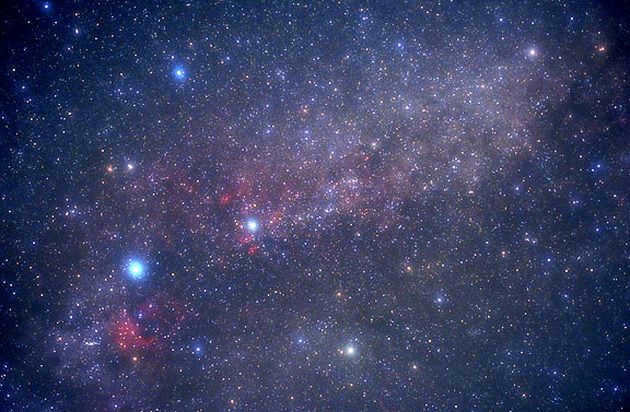
34 Swan, a brilliant blue variable hypergiant with a spectral class B1Ia +, resides at a distance of 6,000 light-years. This celestial body stands out as one of the most luminous stars ever observed within the Milky Way galaxy. The occurrence of luminous blue variables is quite rare, as they are exclusively found in regions characterized by intense star formation. However, their lifespan is relatively short-lived due to their immense mass and energy, resulting in the rapid depletion of nuclear fuel and their eventual transformation into supernovae within a few million years. In contrast, our Sun has been able to sustain its existence for billions of years.
Willem Blaeu first observed the star in August 1600, which had previously gone unnoticed due to its low magnitude at the beginning of the 16th century. The star disappeared in 1626, but reappeared in 1655 and remained visible until 1662. It wasn’t until 1715 that the star’s brightness fluctuations finally stabilized. It is currently classified as a magnitude 5 star, with occasional variations of up to 0.5.
Star P, also known as a nova, was named by Johann Bayer. It is sometimes referred to as a permanent nova due to its significant changes in brightness.
A star in the main sequence, specifically classified as an F3 V, is positioned 59.8 light-years away from our solar system. It possesses an apparent visual magnitude of 4.490, making it four times brighter than our Sun, and it also has a mass that is 38% larger. This star is estimated to have an age ranging from 0.6 to 1.9 billion years. Additionally, it has a companion, a red dwarf classified as an M3 V, with a magnitude of 13.03. The red dwarf is located 3 arc seconds away.
This particular star is intriguing due to its potential to support an extrasolar planet. The ELODIE team has observed variations in its radial velocity, which indicate the presence of an object in orbit with a period of less than six months. The planet is believed to be approximately twice the size of Jupiter, although its existence has not yet been definitively confirmed.
16 Swan
A triple star system known as 16 Swan has been discovered. This unique system consists of two bright, Sun-like yellow dwarf stars with apparent magnitudes of 5.96 and 6.20, as well as a red dwarf star. Located approximately 70 light-years away, 16 Swan has captured the attention of astronomers due to the presence of a planet in the eccentric orbit of the second star.
Gliese 777 (HD 190360)
.

Situated 51.81 light-years from Earth, there is a yellow subgiant (G6IV). It has an apparent magnitude of 5.71. In 2005, scientists discovered the existence of two planets outside of our solar system within this particular star system. Additionally, there is a companion present, which is a faint red dwarf (M4.5V) located at a distance of 3000 a.u. This companion has a visual magnitude of 14.40 and could potentially be a binary star.
Omega of the Swan
Ruhba is composed of two optical duplicates that are 1/3 degree apart. The customary designation Rukhba is derived from the Arabic term “knee of a chicken”. Omega-1 is a scorching subgiant (B2.5) with a visual brightness of 4.95 and a distance of 910 light years. Omega-2 is a crimson giant (M2III) with a brightness of 5.22, positioned 400 light-years distant.
Celestial entities in the constellation Cygnus
Aside from hosting numerous remarkable stars, the constellation of Cygnus is remarkably abundant in remote celestial objects. There exist over twenty-five dispersed clusters, multiple emission clusters, and a significant quantity of dark nebulae. To observe these treasures, it is most advisable to equip oneself with high-powered binoculars like the 15×70.
The Northern Coal Sack
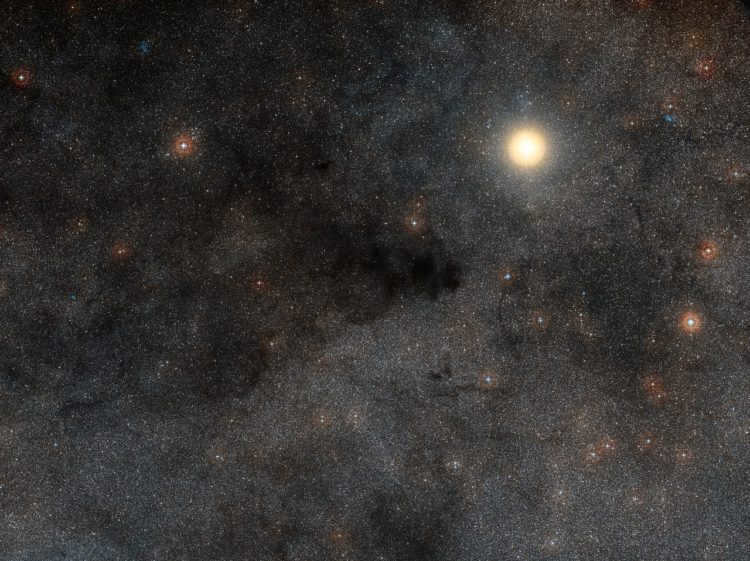
Firstly, let’s start our journey from the southwest part of the constellation and head towards the northeast direction. As we progress, each of these celestial objects will gradually come into our view. They will appear as floating entities against the backdrop of the scattered stars of the Milky Way. Occasionally, we may also notice darker areas, resembling “pockets,” within this stellar scatter. These pockets are actually dark nebulae, which are essentially clouds of cold, thinly spread interstellar matter. Among them, there is a particular dark nebula located slightly south of Deneb, known as the Northern Coal Sack. This name is derived from its resemblance to the Coal Sack nebula found in the Southern Cross constellation.
The best way to observe the Northern Coal Sack is by using wide-angle binoculars with a magnification of up to 5x, or simply with the naked eye under a sufficiently dark and clear sky. In either case, you will be able to witness a distinct dark region with an irregular elongated shape. From this region, a dark band extends towards the south.
Nebula North America and Pelican: A Dynamic Duo
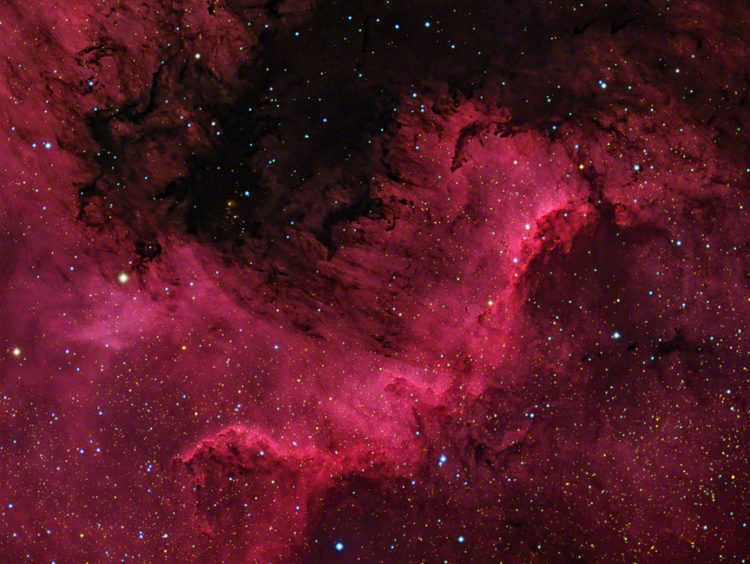
Let’s start with Deneb to locate our next celestial object, the emission nebula NGC 7000, which is more commonly known as the North America nebula. This nebula is relatively bright.
The nebula has a magnitude of 4.5 stars, but its surface brightness is not particularly high. This is due to its expansive size (the nebula barely fits within a 2.5-degree field of view). It is also not surprising that locating the North America nebula may not be easy on your first attempt. Additionally, its contrast with the relatively bright star clouds of the Milky Way is relatively low.
Observation of NGC 7000
The NGC 7000, also known as the North America Nebula, is an emission nebula located in the constellation Cygnus. It is named after its resemblance to the continent of North America. The nebula is approximately 2,200 light-years away from Earth and spans an area of about 100 light-years.
Observing NGC 7000 is an exciting experience for astronomers and stargazers alike. The nebula can be seen with the naked eye under dark sky conditions, but it is best viewed through a telescope. The intricate details and vibrant colors of the nebula come to life when observed through a high-quality telescope.
To observe NGC 7000, it is recommended to find a location with minimal light pollution. This will ensure the best possible view of the nebula. Once a suitable location is found, set up a telescope and adjust the focus to achieve a clear image.
When observing NGC 7000, take the time to appreciate its unique shape and structure. The nebula is shaped like a wide swath of gas and dust, with dark patches resembling the Gulf of Mexico and the Caribbean Sea. The bright, glowing regions of the nebula represent active star formation regions, where new stars are born.
In addition to its visual appeal, NGC 7000 also emits radio waves and X-rays. These emissions provide valuable information about the nebula’s composition and physical properties. By studying NGC 7000 across different wavelengths, scientists can gain a deeper understanding of the processes occurring within the nebula.
Overall, observing NGC 7000 is a captivating experience that allows astronomers and stargazers to appreciate the beauty and complexity of our universe. Whether through a telescope or with the naked eye, the North America Nebula is a sight worth seeking out.
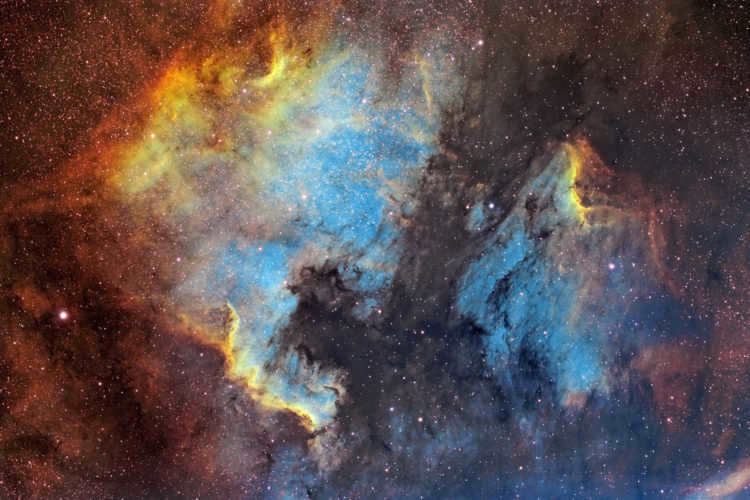
When observing a dimly lit rural or suburban sky, it is possible to easily identify a gentle luminescence approximately three degrees to the east of Deneb. However, when one looks through binoculars at the exact spot where the naked eye had just perceived the glow, it quickly merges with the Milky Way and becomes more challenging to detect. A more efficient approach to locating NGC 7000 in binoculars involves focusing not on the glow itself, but instead on the dark region that delineates the celestial “Gulf of Mexico” within the celestial “continent”. By locating the “gulf”, it becomes much simpler to discern the distinct and unmistakable form of the nebula.
Using powerful binoculars, this hydrogen cloud, which serves as a nursery for stars, appears truly breathtaking. The nebula appears almost too large to fit within the field of view at 15-20x magnification. Along the northeastern edge of the “continent,” one can observe individual strands, seemingly adorned with denser, gently luminous threads. In addition to its noticeable radiance, the backdrop of the nebula shimmers with countless stars, creating a striking gradient.
Pelican Nebula
Located across from the “Gulf of Mexico” lies another nebulous formation – the Pelican Nebula, which is the counterpart to the second portion of North America. While they may appear separate in the sky, both the continent of America and the Pelican Nebula are actually part of a larger, interconnected region composed of doubly ionized hydrogen. This expansive area is divided by a band of dust, creating the illusion of distinct entities in the night sky.
M39, the dispersed star cluster

After leaving Deneb, we continue our journey approximately 8 degrees towards the Northeast, where we encounter our next objective, the M39 cluster. With even the most basic binoculars, we can observe around twenty-four stars arranged in a distinctive heart-shaped cluster. If you have a telescope with a larger aperture, you may also notice a subtle bluish hue emanating from the stars.
M29 is the subsequent and final entity in this constellation listed in Messier’s catalog, M29. It is located approximately two degrees away from Sadr (γ Cyg). When observed through small binoculars, this group of stars appears as a compact and densely packed cluster, surrounded by a bright glowing ring. At magnifications of 20-30x, the cluster disintegrates into twelve bright stars arranged in an intriguing geometric formation, which includes a rectangle and a triangle.
The Veil Nebula
The Veil Nebula is a celestial object located in the constellation Cygnus. It is a large, faint cloud of gas and dust that is the remnant of a supernova explosion that occurred around 8,000 years ago.
The Veil Nebula is one of the most studied supernova remnants in the sky, and it has been observed in various wavelengths of light, including visible, infrared, and X-ray. These observations have revealed a complex structure with multiple filaments and shells of gas and dust.
The Veil Nebula is also a source of intense radiation, especially in the form of X-rays. This radiation is produced by the hot, dense gas at the center of the nebula, which is heated by the shockwaves from the supernova explosion.
Overall, the Veil Nebula is a fascinating object that provides valuable insights into the life and death of stars. Its intricate structure and intense radiation make it a subject of great interest for astronomers and astrophysicists.
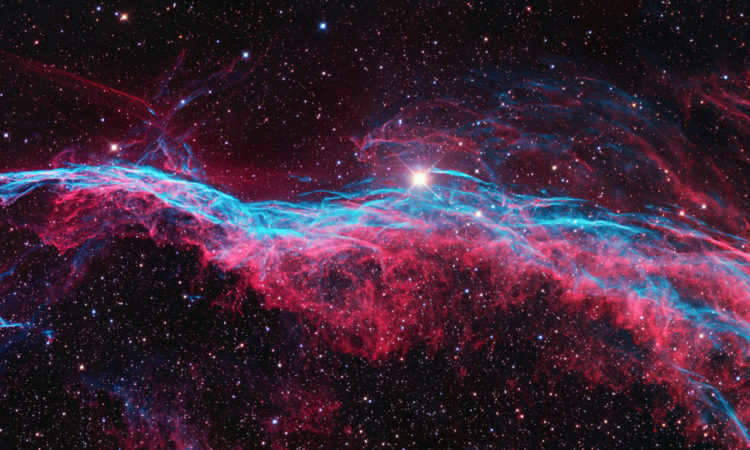
There is another fascinating object located near the midpoint between ε and ζ Cyg (specifically, 0.5 degrees to the Southwest). This nebula is the remaining aftermath of a supernova explosion that occurred in the constellation around 5,000 to 8,000 years ago. It is now known as NGC 6992 or the Veil Nebula. Because it is relatively close to us (only 1400 light years away), the Veil Nebula can provide us with a wealth of intricate details, even when observed with low-aperture telescopes.
Take, for instance, when using binoculars in a field, under clear and extremely dark skies, we can easily make out the northern and southwestern sections of the nebula in the form of thin, filamentous clouds. This becomes even simpler as the aperture size increases, and with a 15×70 binoculars, we can clearly observe the curved shape of the Northern Wing of the nebula, along with some variations in its brightness, resulting in the Veil appearing as separate islands rather than a continuous ribbon.
In an average telescope with an objective diameter of 90 – 120 mm, it is quite effortless to see all three parts of the nebula, and the details are easily visible even with a direct view. However, with a larger aperture telescope ranging from 6″ to 8″, we can begin to unravel the intricate pattern of fine dust particles, allowing us to see even more intricate details.
It is worth mentioning that when using more advanced instruments, there may be some inconvenience due to the fact that the entire nebula is not visible in the field of view, requiring one to navigate along its stream. However, the most impressive experiences of observing the nebula can be achieved with a large astronomical binoculars.
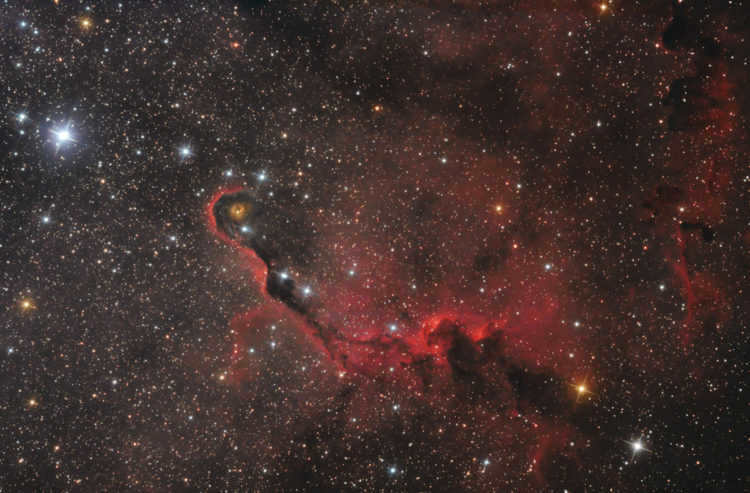
NGC 6960 or Witch’s Broom is another component of the supernova remnant. It can be easily located due to the presence of the bright (4.8m) blue-white star 52 Cyg near its center. This star is unrelated to the nebula and is actually much closer to us, appearing to be projected onto the supernova remnant.
The Witch’s Broom has a similar level of brightness compared to the Veil. When observed through a small telescope, it stands out against the backdrop of the Milky Way as a sparkling ribbon of light extending from East to West. To fully appreciate the intricate details of the filigree entanglements, a fast telescope with an aperture of 6″ or larger is required.
NGC 7082 and 7039: Clusters Scattered Across the Sky
Let’s venture to the Northeast from Deneb, armed with a pair of binoculars. In this region, you will discover a plethora of scattered clusters. Look towards the South-South-East of the previously observed M39, and you will come across NGC 7082 and 7039.
These clusters are notable for their dazzling display of stars. With just binoculars, you can easily count two dozen individual luminaries in each cluster, which stand out against the sparkling backdrop of the Milky Way.
PK 64+5.1: A Stunning Planetary Nebula
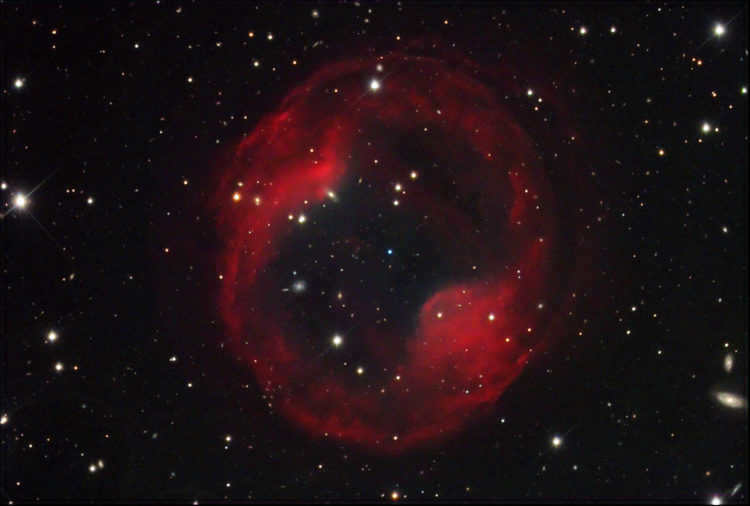
In the constellation Cygnus, there are at least two other planetary nebulae with a tenth stellar magnitude. One of the brightest is PK 64+5.1, which is located nearly three degrees NNW of Albireo (β Cyg). To locate the nebula, we need to move upwards from Albireo for about two degrees until we reach a star with a magnitude of 4.8. Next to it, about one degree to the northeast, there is a brighter star with a magnitude of 3.9. The nebula can be found at the northwest apex of an equilateral triangle.
When observed through a telescope, this object appears as a small, slightly blurred star with a magnitude of 9.6. This star-like appearance can make it difficult to identify the nebula. To confirm that it is not a star, a magnification of around 80 to 100x is required.
There is another planetary nebula, measuring 9.8m, that can be found near ι Swan. This particular nebula is known as the Hubble Shimmering Nebula and can be found in the New General Catalog under the designation 6826. To locate it, you can start by looking two degrees southeast of ι Cyg, where you will find a visually multiple star. This star is slightly dimmer than the starting star and is part of a system that includes the variable star R Cyg. Traveling 1.5 degrees East-Northeast from this system will bring you to the location of NGC 6826.
If you want to verify the correct orientation, one option is to look half a degree to the North from the estimated location of the nebula. There, you should see a beautiful chain of stars forming an arched shape.
The Flickering nebula gets its name for a reason. When observed through a medium aperture telescope, it appears to change in brightness as you transition from side to direct vision. This effect is caused by the nebula’s double shell structure. The outer shell, which is less bright, can only be seen with side vision, while the inner shell is visible even with direct vision.+
This distinct characteristic is visible in telescopes with an aperture of 100 mm and larger. However, it is not easy to detect in smaller instruments. Despite its brightness, the nebula is small in size and can easily be mistaken for a star. But with persistence and effort, the sky will reward you with the opportunity to witness this marvel of the Universe.
What is the method of locating the Swan constellation in the night sky?
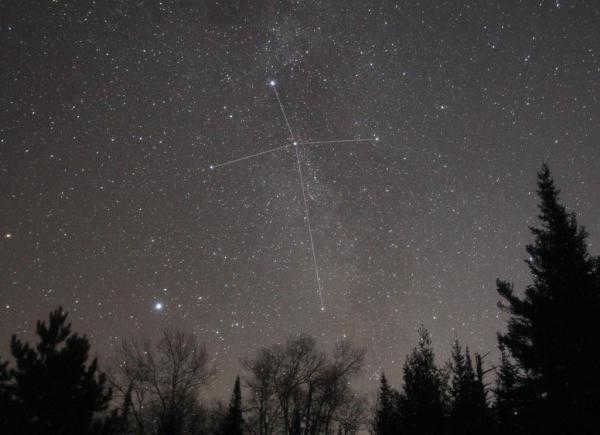

The constellation can be easily spotted in most parts of Russia, except for the northern regions during the period of white nights. In other areas, the ideal times for observing the constellation are during the summer and autumn seasons.
Locating the constellation is not a challenging task, as the star Deneb is part of the famous formation known as the “Summer Triangle”. Towards the west of the Swan, you can find one of the brightest stars in the night sky – Vega (part of the Lyra constellation). Towards the east, there is the “square” of Pegasus, and towards the south, you can spot the Eagle, which is easily visible due to the presence of Altair.
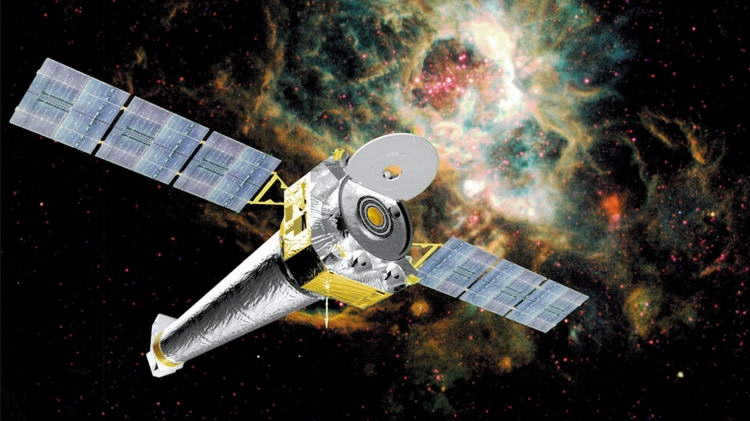
Astronomers and physicists have been fascinated by black holes for over 200 years, and recently, a black hole was discovered in the constellation of Swan. The concept of black holes was first suggested by Laplace in the XVIII century, although they were not referred to as such at the time. Laplace’s reasoning was based on the law of universal gravitation. According to this law, in order for a spacecraft or any other object to permanently escape Earth’s gravitational pull, it must reach the second cosmic velocity, also known as the parabolic velocity, which is equal to 11.2 km/sec.
When moving at lower velocities, the object will either descend towards the Earth or become a satellite of it. In order to escape from Jupiter, the object needs to attain a parabolic velocity of 60.4 km/s, while to break free from the Sun, a velocity of approximately 600 km/s is required. Now, consider a celestial body that can only achieve escape with a parabolic velocity that is not less than the speed of light, which is 300,000 km/s. As nothing in the natural world can travel at a velocity greater than that of light, this celestial body will exert a gravitational pull that draws everything towards it, preventing anything, including light, from escaping. It’s akin to a spatial void.
Due to the fact that these black holes do not emit light, it was not anticipated that they would be visible in the sky through telescopic observations. Nevertheless, in the early 1970s, when a telescope capable of detecting X-rays was sent into space, astronomers were able to detect radiation from celestial objects in a wavelength range that was previously inaccessible from Earth’s surface due to significant absorption in the atmosphere.
By utilizing a nearby telescope situated close to the Swan constellation, scientists were able to detect an intriguing and rapidly-changing X-ray source known as Swan X-1. The “X” in its name denotes its association with X-rays. This source was observed to orbit a highly massive and scorching hot star with a period of approximately 5.6 days. The quick fluctuations in its output indicated a remarkably small size for the source, measuring less than 1000 km. Stars of this size have yet to be discovered by the scientific community. Additionally, examinations of the main star’s optical emissions demonstrated periodic shifts in its spectral lines, providing valuable insights into the mass of the invisible X-ray source. It was determined that this source possesses a mass 10 times greater than that of the sun.
The disk takes on the form of a ring encircling the celestial body known as Saturn. It is now within our capability to envision the arrangement of the Swan X-1 entity: a luminous and scorching star spanning millions of kilometers in diameter, with a rapidly rotating black hole measuring approximately 30 km in radius positioned in close proximity. This black hole is encompassed by a disk composed of intensely heated material, extracted from the primary star.
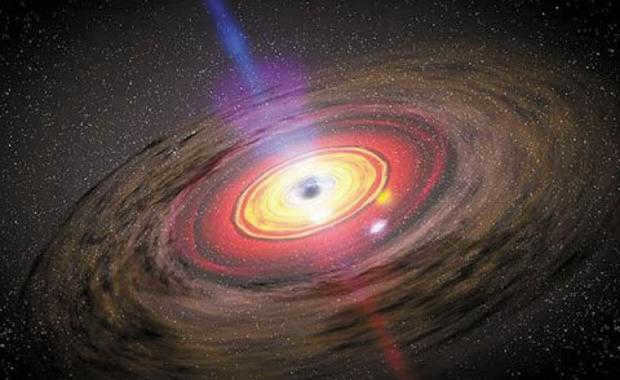
When gazing at the sky on a clear summer evening, one can become overwhelmed by the vast number of stars, potentially causing dizziness. The expansive realm of the cosmos above our heads has always captivated and enticed us with its enigmatic nature. To simplify matters, the multitude of stars is categorized into constellations. The optimal time to observe each constellation depends on its specific positioning. If one were to venture from Earth into space, they would not encounter anything resembling the familiar celestial patterns of our childhood. The individual components that comprise constellations appear scattered and no longer form a cohesive entity. This is because each constellation represents a projection of a specific region of the sky, where all the cosmic bodies present in that area are mapped according to the observer’s perspective. In reality, the distances between these celestial bodies can span thousands of light years.
One of the most well-known celestial illustrations is the depiction of the Swan constellation. The arrangement of the soaring bird consists of approximately 150 stars, a few of which are among the most prominent objects visible from the planet Earth. Due to their brightness, locating the Swan constellation in the night sky is relatively simple.
Observation
From early childhood, many amateur astronomers are familiar with the appearance of the Swan constellation. The stars that form it are arranged in the shape of a cross, resembling a large bird with an elongated neck and wings spread wide. This silhouette provides an unmistakable explanation for why the constellation is named after the Swan.
The best time to witness it is during the summertime. Nevertheless, the Swan can be seen all year round. It can be most easily identified by the famous asterism known as the “Summer Triangle”. Among its constituents is a star located in the Swan constellation named Deneb. The other two vertices are Vega and Altair, two of the most brilliant celestial bodies in the nocturnal expanse. The Swan constellation is also captivating for youngsters and their caregivers who possess an interest in the field of astronomy, as it extends alongside the Milky Way.
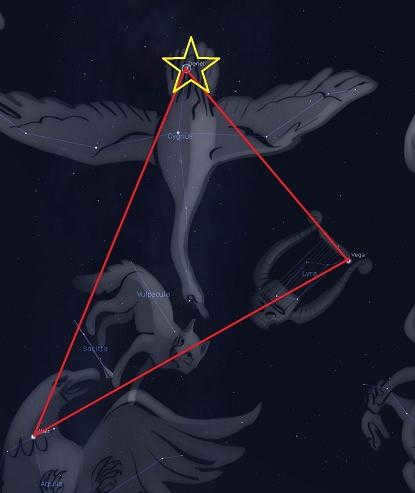
Origins
The current configuration of the night sky has not always been the same. This can be attributed to the fact that the positions of the stars are not fixed and change over time. This phenomenon is particularly noticeable with celestial bodies that are closer to us. For instance, the star Deneb, which currently occupies the position of Polaris, was located there more than 17,000 years ago.
Today, there are 88 constellations that scientists categorize. The Swan constellation is one of the ancient constellations that was mentioned in Ptolemy’s list. However, during that time, it was known as Bird. The history of the Swan constellation includes a reference in the writings of astronomer Eudoxus of Cnidus, which dates back to the fourth century BC. The names of the stars in the Swan constellation reflect the era when many sciences, including astronomy, flourished in the Eastern regions, particularly in Arab countries.
Star Bridge
The bridge that shines like a star
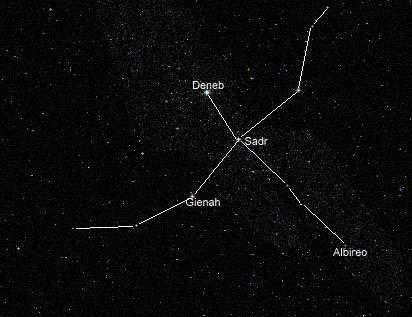
Deneb, also known as Alpha Swan, is the most prominent star in the Swan constellation. Its name, derived from Arabic, means “tail,” which accurately reflects its position within the constellation. Deneb adorns the Swan constellation (as shown in the diagram above), specifically in the region where the bird’s tail is located. This celestial object belongs to the category of white supergiants. Its magnificence becomes apparent when compared to our own sun. Deneb has a mass equal to twenty times that of the sun. Estimates place its distance from Earth at anywhere between 1.55 to 2.6 thousand light years. Despite this vast distance, Deneb is still clearly visible in the night sky due to its luminosity, which is over 270,000 times greater than that of the sun.
As previously stated, Deneb is a component of the Summer Triangle. An enchanting Chinese myth is connected to the stars at its summits, whereby Deneb serves as a link between two lovers, symbolized by Vega and Altair in the heavens. According to the legend, this event occurs annually, allowing the lovers to reunite for a single night before they must part ways once more for another year.
Venetus
The opposite point of the Swan constellation to Deneb is Albireo (beta Swan). It sits atop the head of the bird. To get an idea of what the Swan constellation looks like and its location, one only needs to locate these two bright points. Albireo, similar to Deneb, is visible to the naked eye. However, those who choose to observe it through a telescope will be treated to an even more fascinating sight. Albireo is a binary star system. The larger star, Albireo A, is an orange giant. Its companion is a blue star that belongs to the Main Sequence, known as Albireo B. The name of the star can be translated from Arabic as “chicken’s beak”.
The focal point of the constellation is Sadr, which is translated as “chest”. It is the second most brilliant star. Sadr (Swan gamma) is a supergiant star classified as F8, with a pulsation cycle of 74 days. It has a mass 12 times that of the Sun.
Next in brightness after Sadr is Delta Swan. It is a binary star system located 170 light years away from Earth. It is more challenging to discern compared to Albireo. Delta consists of two stars that are in close proximity, with an orbital period of 537 years. The first star is a blue-white giant with a luminosity significantly higher than that of the Sun. Its companion is a yellow-white star, which is less remarkable in all aspects.
Standard
Epsilon of the Swan, also known as Jenach, is not just a notable point in the celestial map, but also plays a crucial role in astronomical calculations. Situated 73 light years away from Earth, Jenach, or Hyenach, translates to “wing,” accurately describing its position in the constellation. It outshines the Sun by a factor of 62.
Jenach holds a significant position in scientific research as its spectrum serves as the benchmark for classifying other stars. Moreover, it was on this celestial body that the discovery of Neptune took place in 1846.
The Northern Cross
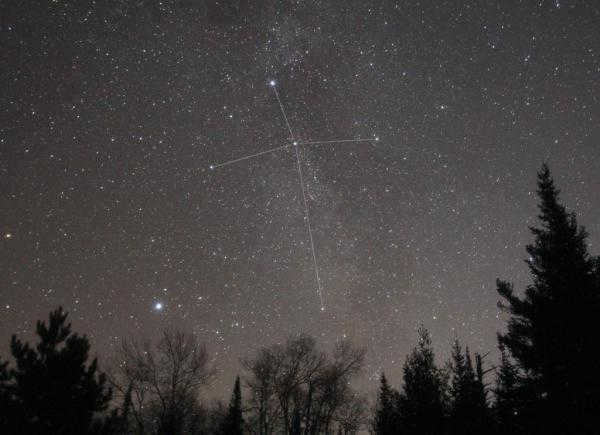
The constellation Swan, also known as Cygnus, is famous for its prominent asterism known as the Northern Cross. Comprised of five stars, this asterism is easily recognizable and is a popular sight for both children and adults. At the base of the Northern Cross is the star Albireo, while the top is marked by Deneb. In the center of the asterism lies Sadr, with Jenach and Delta Swan on the sides. These five stars form the brightest points of the Swan constellation. Unlike other elements of the constellation, the Northern Cross does not emit a bright glow. However, it is this asterism that gives the Swan constellation its distinct visibility. While there are other interesting objects within the celestial bird, the Northern Cross is the most well-known and easily identifiable. Locating it is not a difficult task, as this asterism is recognized by almost everyone.
One more fascinating celestial object in the constellation is 61 Cygni, a binary star system. This particular system consists of two orange dwarf stars. Similar to Albireo, this system is observable from our planet and is open for examination. What sets it apart is that 61 Cygni is one of the nearest stars to the Sun, situated at a distance of 11.36 light-years from our star. Furthermore, it showcases a significant proper motion and belongs to a select group of similar objects that can be seen from Earth. 61 Cygni gained fame due to the belief in the field of astronomy during the mid-20th century that it possesses a planetary system. However, subsequent data collected have not provided support for this hypothesis, though the star remains the focus of attention for many scientists.
One other fascinating entity is the black hole Swan X-1, which is situated near 61 Swan. It holds the title for being the most luminous X-ray source in the constellation. Swan X-1 is linked with two distinct entities: one being a brilliant blue star, while the other is its unobservable companion. The radiation emanates from the matter of the blue star that is flowing into the black hole. During this process, the matter becomes intensely heated and expelled into space as two jets, which are directed in opposing directions from the entity. In the 1970s, Swan X-1 was officially recognized as a black hole.

Galactic Clouds
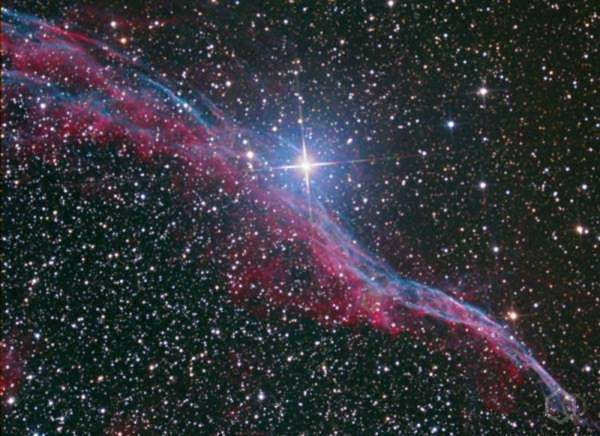
The constellation Swan contains more than just stars. It also includes a region known as the Northern Coal Sack, which is a cloud of dust and gas located near our Galaxy. Additionally, there are various nebulae present in the constellation. One fascinating feature is the Veil or Network, which consists of NGC 6960 and NGC 6992 and is the result of a supernova explosion that occurred 40,000 years ago. Another notable nebula is the Witch’s Broom Nebula, located at the western edge of the Veil, and it appears incredibly beautiful when observed through a telescope.
Orpheus and the lyre
Once upon a time, there was a talented musician named Orpheus. He was known for his beautiful singing voice and his exceptional skills with the lyre. The lyre was a stringed instrument that Orpheus played with great passion and creativity.
One day, Orpheus found himself in a difficult situation. His beloved wife, Eurydice, had passed away and he was overcome with grief. Determined to bring her back to life, Orpheus decided to travel to the underworld, the realm of the dead.
With his lyre in hand, Orpheus made his way to the gates of the underworld. He played a haunting melody that captivated the attention of the gods and the spirits of the dead. His music was so enchanting that even the fierce guardian of the underworld, Cerberus, fell asleep.
As Orpheus continued to play, he made his way past the gates and into the depths of the underworld. His music stirred the hearts of Hades and Persephone, the rulers of the underworld, who agreed to let him bring Eurydice back to the world of the living.
However, there was one condition. Orpheus was not allowed to look back at Eurydice until they had reached the world above. He agreed to the condition and began the journey back, with Eurydice following behind him.
As they ascended from the underworld, Orpheus couldn’t resist the urge to look back at his beloved wife. In that moment, Eurydice disappeared, forever lost to him. It was a tragic end to their love story.
Orpheus was devastated by the loss of Eurydice. He mourned for her deeply and his music reflected his sorrow. His lyre, once used to bring joy and happiness, now played mournful melodies that touched the hearts of all who heard them.
The story of Orpheus and the lyre serves as a reminder of the power of music and the depths of human emotions. It is a tale of love, loss, and the consequences of breaking a promise.
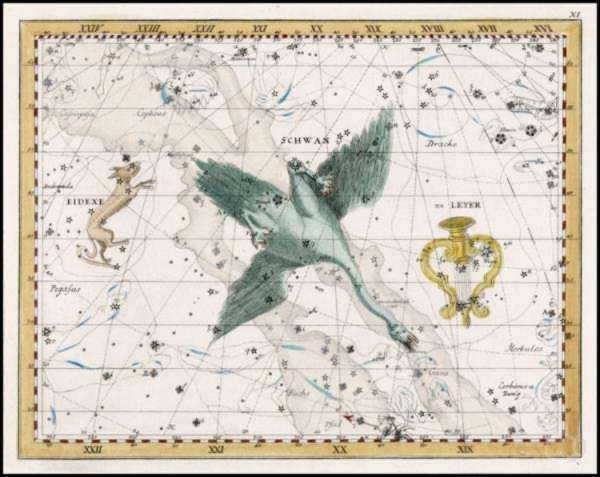
Phaeton
There are various other legends that explain the reason why we now have the constellation of Swan. One of these legends is about Phaethon, the son of Helios, the god of the sun. Phaethon, being a mortal, wanted to prove his divine origins and asked his father for permission to ride the solar chariot across the sky. Helios granted his request. However, Phaethon, filled with pride, was unable to control the fiery horses and was thrown off the chariot, falling into a river. Kikn, a loyal friend, searched tirelessly for Phaethon’s remains on earth. Moved by Kikn’s devotion, the gods transformed him into a swan as a reward. In this swan form, Kikn lived by the water. To immortalize their selfless friendship, Zeus placed the constellation of Swan in the sky. This legend, which revolves around a hero named Kikn, exists in different variations. Interestingly, Kikn’s name in Greek translates to “swan”.
Variations in the Origin and Demise of Kikn
In various myths, the protagonist, who later transformed into a majestic bird, was believed to be the offspring of different gods. In one version, Kikn was born to Apollo and met his end by drowning in a lake, which was subsequently named Cycnaeus. Another account portrays Kikn as the son of Poseidon and Kalika, and he is mentioned in the legends surrounding the Trojan War. According to this tale, he was slain by Achilles, and his father transformed him into a swan. A third variation suggests that Kikn’s parents were Ares, the god of war, and Pelopia. The legend highlights Kikn’s exceptional skill in chariot racing. He would often challenge any guests who visited his home to a competition, and he emerged as the victor until Heracles became his rival. Heracles surpassed the son of Ares and even wounded the god of war himself. This prompted Zeus to intervene and, as a consequence, Kikn was transformed into a swan.
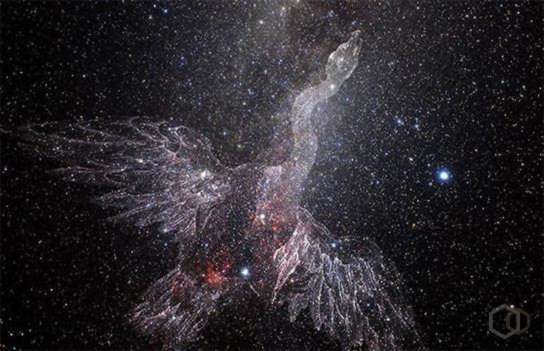
Finding the Swan Constellation
The constellation of the Swan was given meaning in later eras. In the maps of the 17th century and beyond, it was often depicted as the crucified Christ, replacing its original representation. The asterism Northern Cross, which is easily visible from Earth, played a significant role in this identification. Earlier documents also made a connection between the Northern Cross and the crucifixion. A treatise by St. Gregory of Tours, written in 592, describes a Great Cross that is related to the constellation of the Swan. According to the saint, this cross was situated between the stars Delphinus and Lyra, which represented the letters alpha and omega, respectively. These symbols align with a quote from the book of Revelation, where the risen Christ refers to himself as Alpha and Omega, the beginning and the end.
It is intriguing that the depiction of the crucifixion once again alludes to Orpheus. Some scholars suggest that the early Roman-Christians borrowed the symbol of the crucified god from the pagans, who depicted Orpheus in a similar manner. This hypothesis further links the constellation of the Swan, the myth of the singer, and the biblical legend.
The vast expanse of the night sky, with its mesmerizing beauty that captivates both the eyes and the minds of people, compelled the wisest individuals in ancient times to seek understanding and meaning. The Swan constellation serves as a striking example of how the human need to comprehend the elusive cosmos found expression through art, poetry, and storytelling. It is possible that without the legends and myths crafted by our ancestors, much of what we know about the universe today would remain unknown.
Modern individuals also possess a yearning to comprehend the secrets concealed behind the numerous luminous entities scattered across the nocturnal expanse. Beyond the rigorous scientific calculations lies an aspiration to fathom the enigma of the cosmos, to grasp its principles, and to intuitively apprehend the impossibility of encapsulating its vastness within the human psyche. Visual representations captured by the Hubble telescope and its “counterparts” vividly demonstrate the remarkable accuracy with which ancient poets apprehended the resplendence adorning the celestial sphere. Gazing upon these images, one cannot help but entertain the notion that deities themselves would feel no trepidation in dwelling amidst the resplendent radiance of stars and nebulae.

The Swan constellation can be observed throughout the year in the middle latitudes of Russia. Its mesmerizing asterism takes the form of a cross, with the tail represented by the bright star Deneb. It is hard to miss, even for the average person. However, if you wish to catch a glimpse of the P Swan star located near the center of the cross, you will need to take a closer look. Although this star is visible to the naked eye, it is not particularly bright.
P Swan. An Unusual Star
It quickly became evident that this particular star possessed peculiar characteristics. As it grew dimmer and dimmer. And in 1626, it completely vanished. It was no longer observable with the naked eye.
However, nearly thirty years passed, and in 1655, just like in 1600, the star reemerged in the celestial sphere. But its reappearance was short-lived. In 1662, it vanished once again. And then it reappeared once more.
The game of hide and seek appeared to continue. However, P Swan abruptly altered his stance on participating, and for the following centuries, the star remained observable, gradually growing brighter and brighter. It never regained the same level of brightness as when it was initially discovered in 1600. Nevertheless, it could be easily seen without any additional instruments.
The star acquired its name from the constellation of the Swan in the star catalog “Uranometria” which was published by Johann Bayer in 1603. Within this catalog, the stars of the constellations are arranged by their brightness using Greek and Latin letters, with Greek letters being used when Latin letters are insufficient.
Therefore, it is known as “P of the Swan.” This name holds a certain beauty, and it is well-deserved. This particular star is worthy of our attention.
Astronomers find it interesting that the exact distance between this star and the solar system is still unknown. However, they estimate that it falls within a range of 5,000 to 7,000 light years. The fact that we can observe this star from such a great distance indicates that it must be an exceptionally luminous celestial body. In fact, it is at least 500,000 times brighter than the Sun, and possibly even shining up to a million times brighter!
To make this possible, it is essential for the star to be extremely hot. The surface temperature of P Swan reaches a range of 18,000 to 20,000 degrees Celsius! This surpasses the surface temperature of the Sun, which is a mere 5,500 degrees.
P Swan possesses a mass that is 30 to 60 times greater than that of the Sun, and a radius that is 76 times larger.
P Swan surrounded by a gas cloud. Source: NASA, Hubble Space Telescope.
Variable hypergiant
P Swan is an immense star in every aspect. These types of stars are referred to as “bright blue variable hypergiants”. The reason for their brightness and blueness is quite evident. A star with such an enormous mass naturally becomes extremely hot and therefore emits a tremendous amount of light. The immense mass of the star exerts an immense pressure on its core, causing a massive fire of thermonuclear fusion to ignite. The hydrogen atoms within the star fuse rapidly, resulting in a significant release of radiation and causing the star to expand. It is inevitable for a hot star like this to appear blue. However, what causes its variability remains a question.
Within the vastness of the universe, numerous celestial bodies undergo variations in their luminosity. Interestingly, these fluctuations often occur in a predictable pattern, with these stars experiencing periodic changes in their brightness. Unlike the drastic and conspicuous fluctuations of P Swan, the fluctuations of most stars are far more subtle. If stars were to constantly oscillate between extreme brightness and darkness, to the point of vanishing or reappearing abruptly in the night sky, human observers would undoubtedly have observed such phenomena over time.
Indeed, there are circumstances in which stars manifest themselves seemingly out of thin air. One such instance is the occurrence of a supernova explosion. This event marks the final stage in the existence of a massive star, when it can no longer sustain nuclear fusion within its core. As a result, the star undergoes a collapse and subsequent explosion. This grand eruption, along with its lingering glow, gives the impression of a star suddenly materializing in the celestial expanse, where previously none had been observed. Nevertheless, the supernova eventually fades away, leaving no further trace visible to the naked eye. Unless, of course, one employs optical instruments. Therefore, the recurring vanishing and reappearing brilliance of stars like P Swan is an exceedingly uncommon phenomenon.
P Swan has not yet undergone a cataclysmic explosion. However, the significant variations in luminosity indicate that she is certainly approaching the final stages of her existence. In any event, her peculiar behavior is not sustainable for much longer. Stars of similar mass to P Swan that radiate intensely and brilliantly consume their fuel at a much faster rate than stars with a more moderate luminosity, such as our Sun.
The lifespan of our star is estimated to be approximately 10 billion years, whereas bright blue variables have a lifespan of no more than a few million years.
Stratums and masses of vapour
However, what causes Swan’s P to exhibit such peculiar behavior? The phenomenon that astronomers attribute to this is quite intricate. Nonetheless, let’s attempt to delve into its essence.
The copious amount of radiation emanating from the core of the P Swan star not only causes the star to expand, but it also propels fragments of the star into the cosmos! Put differently, the star emits an incredibly potent stellar gust. Concurrently, its surface experiences frequent and powerful eruptions, resulting in the star being encompassed by a self-generated vaporous shroud. Over time, this shroud dissipates into the void of space.
If we want to gain a deeper understanding of this process, we must imagine the visual experience when a star like P Swan undergoes a surge in brightness. In that instant, vast quantities of hot gas are expelled from the star’s outer layers in every direction of space. And if we observe the star from our vantage point, we can observe that a portion of this gas, specifically the gas that lies directly between the star and us, is traveling towards us. Conversely, the gas on the opposite side of the star is moving away from us.
From our perspective, we are unable to see the portion of gas that resides behind the star. This is due to the star obstructing our view. In essence, we perceive a certain volume of gas approaching us, as well as a slightly smaller volume of gas receding from us. Moreover, all of this gas is illuminated by the star’s light, causing it to emit a radiant glow.
Now let’s consider the Doppler effect. When a light source is in motion, the light it emits appears to have a slightly different frequency. This is similar to how the sound of a moving sound wave, like the siren of a moving ambulance, can sometimes sound higher or lower.
When light is emitted from a section of a gas cloud that is moving towards us, it is shifted towards the blue end of the light spectrum. Conversely, light from the gas cloud that is moving away from us appears more reddish. However, this redshifted light is obscured from our view by the presence of the star. Additionally, we must take into account the effects of what is known as the absorption line.
The reality is that not only does light reach us from the outermost regions of the gas envelope, but also from inner regions. As the light travels outward, some of it is absorbed by the surrounding gas, resulting in the formation of an absorption line that is shifted towards the blue end of the spectrum. This absorption line is in addition to the red and blue emission lines, which are asymmetrically shifted.
Admittedly, it can be challenging to visualize this phenomenon. However, it is the combination of these asymmetric absorption and emission lines that produces a distinct, non-uniform profile. This profile is often observed when a hot star expels a significant amount of gas in the form of a rapidly expanding shell.
P Swan. Galactic Rarity
It is not surprising that astronomers do not observe many luminous blue variables like P Swan. These types of stars can only form in regions where there is a significant amount of material for star formation. Once these stars begin to brighten, they are unable to be protected from their imminent demise. Due to the intense stellar winds, these stars expel vast quantities of gas into the surrounding space each year. In fact, this amount can be up to 100 times the mass of the Earth. These gas clouds expand rapidly at speeds of several hundred kilometers per second before ultimately dissipating into the vastness of space. However, despite their rapid expansion, these objects remain relatively close to their parent star in astronomical terms. In comparison to the typical lifespan of a star, these objects have a very short existence and typically meet their end with a powerful supernova shortly after their formation.
Not many objects like P Swan have been discovered in comparison to the total number of stars in the Milky Way. However, what is most astonishing is that the first star of its kind was found in the early 17th century, a time when modern astronomy was just beginning to emerge and people were starting to observe the sky using telescopes.
With a touch of poetic romanticism, P Swan could arguably be referred to as the Star of Bethlehem in the birth of a new science….
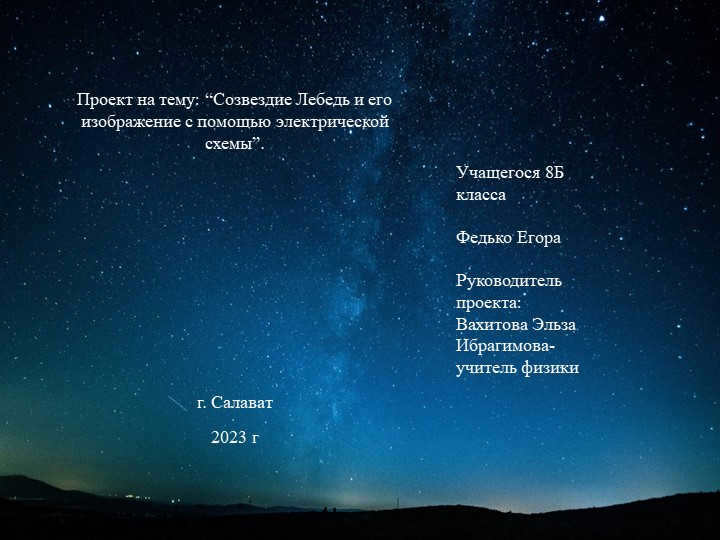
Currently, there are additional cumulative discounts (ranging from 2% to 25%) that are being offered to a total of 58,745 educational institutions. In order to determine the specific discount that applies to all staff members of your educational institution, please access your personal Infoworks account.


Professional development program
Sociology: teaching theory and methodology in educational organizations.
We can apply your educational institution’s discount in addition to this discount (depending on how many of your colleagues have completed Infowrok courses).
Currently, 58,745 educational institutions are eligible for additional discounts (ranging from 2% to 25%). To determine the discount that applies to all employees of your educational institution, please log in to your personal Infoworks account.
Professional training program
Current Challenges in the Use of Narcotic Drugs and Psychotropic Substances in Nursing Practice
In addition to the discount mentioned above, you may also be eligible for an educational institution discount, which will depend on the number of your colleagues who have enrolled in Infoworks courses.
Currently, there are additional cumulative discounts available to a total of 58,745 educational institutions, ranging from 2% to 25%. To determine the specific discount applicable to all employees of your educational institution, please log in to your personal Infoworks account.


In the realm of education, there are both underachieving and gifted children. Although they may share some similarities, there are also fundamental differences in how they are approached and supported.
Breakdown of the presentation by each slide:

1 slide Project on the subject: “The Swan constellation and its representation using an electric circuit”.
Pupil of grade 8B
Project leader:
Vakhitova Elza Ibragimova – physics teacher
Salavat city
2023
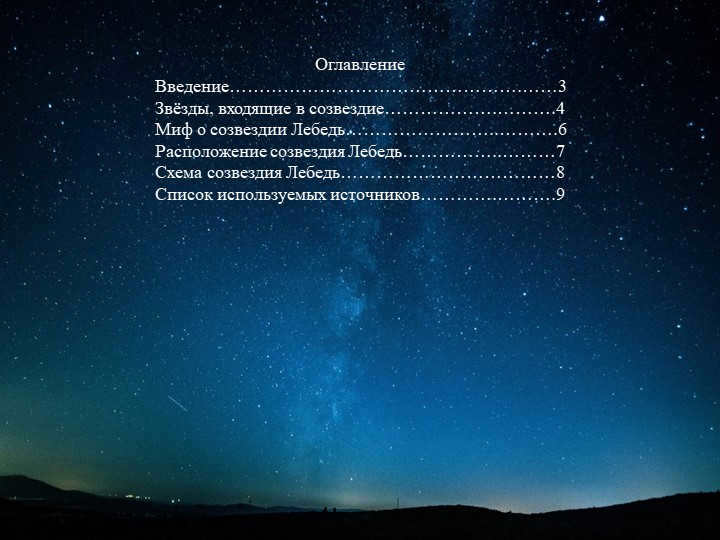

Slide 2: Table of contents
Introduction……………………………………………….3
The stars comprising the constellation………………………..4
The legend surrounding the constellation Swan………………………………6
The position of the constellation Swan……………………..7
The diagram of the constellation Swan………………………………8
List of utilized sources…………………..9

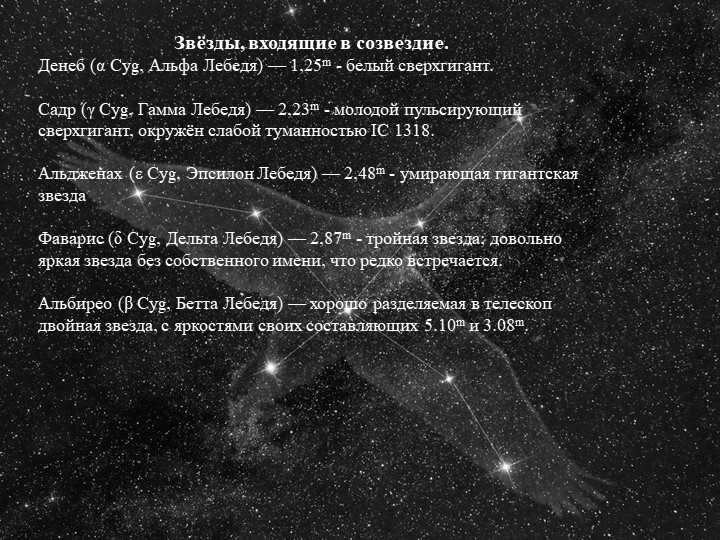
Slide 4: The constellation is comprised of various stars.
Deneb (α Cyg, Alpha Swan) is a white supergiant with a magnitude of 1.25m.
Sadr (γ Cyg, Gamma Swan) is a young pulsating supergiant surrounded by the faint nebula IC 1318, and it has a magnitude of 2.23m.
Algenach (ε Cyg, Epsilon of the Swan) is a dying giant star with a magnitude of 2.48m.
Favaris (δ Cyg, Delta of the Swan) is a triple star with a magnitude of 2.87m. It is a fairly bright star without a proper name, which is quite rare.
Albireo (β Cyg, Betta of the Swan) is a well-separated double star in the telescope. Its constituents have brightnesses of 5.10m and 3.08m.
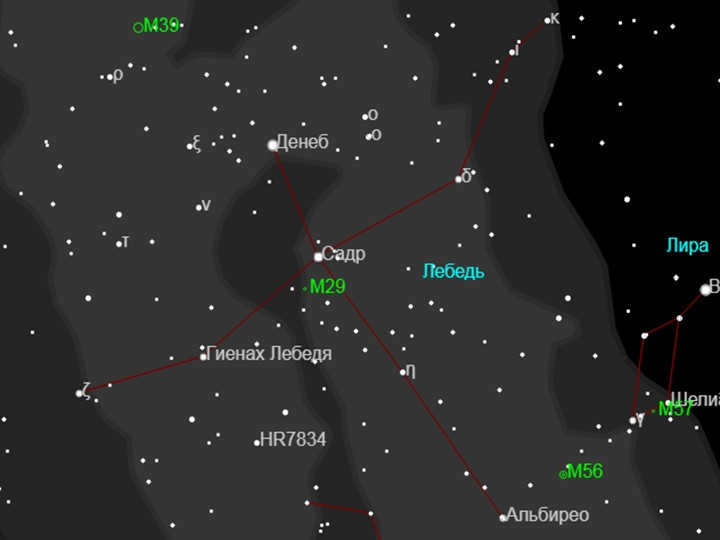
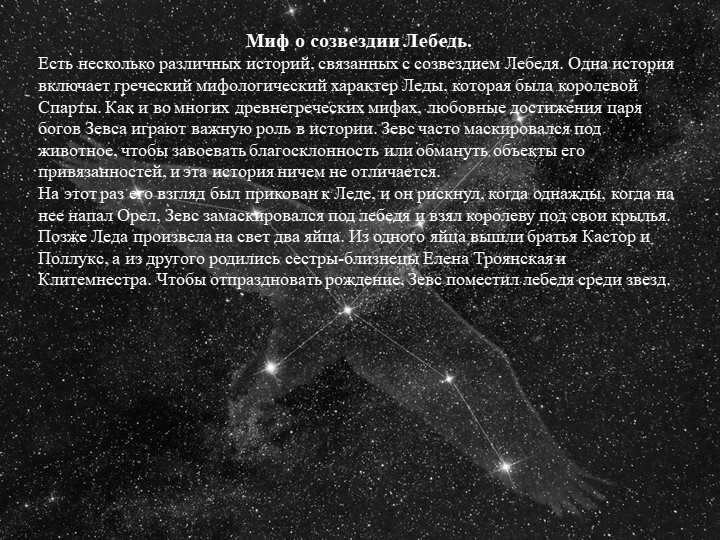
Slide 6: The Myth of the Swan Constellation
There are numerous tales associated with the constellation of the Swan. One of these stories revolves around the Greek mythological figure, Leda, who served as the queen of Sparta. Similar to many ancient Greek myths, the romantic escapades of Zeus, the king of the gods, play a crucial role in this narrative. Zeus frequently assumed the guise of an animal to gain favor or deceive the objects of his desires, and this particular story is no exception.
On this occasion, Zeus set his sights on Leda and took a daring leap when, one day, she was attacked by an Eagle. Disguised as a swan, Zeus swept in and sheltered the queen beneath his wings. Later, Leda laid two eggs. From one egg emerged the brothers Castor and Pollux, while the other egg gave birth to twin sisters Helen of Troy and Clytemnestra. In celebration of their birth, Zeus immortalized the swan by placing it among the stars.


Slide 7: The location of the Swan constellation.
During the summer months in July, the Swan constellation is prominently visible in the sky of the middle belt of Russia. It is characterized by its distinct cross shape and the star Deneb, which is almost directly overhead. Due to its cruciform appearance, it is often referred to as the “Northern Cross,” drawing a parallel to the Southern Cross constellation in the southern hemisphere.
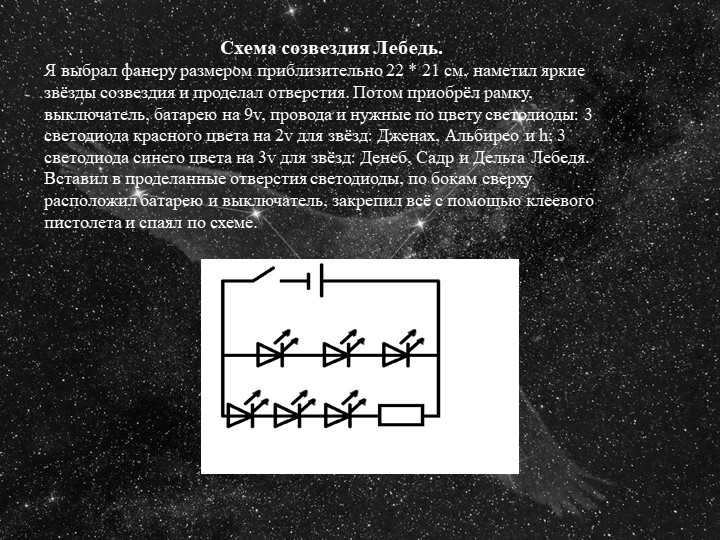

Slide 8 showcases a diagram of the Swan constellation.
I selected a plywood sheet with dimensions of around 22 * 21 cm, marked the prominent stars of the constellation, and created holes. Next, I purchased a frame, a switch, a 9v battery, wires, and the appropriate color LEDs: 3 red LEDs with a voltage of 2v for the stars Jenach, Albireo, and h; and 3 blue LEDs with a voltage of 3v for the stars Deneb, Sadr, and Delta Swan. I inserted the LEDs into the holes, positioned the battery and switch on the upper sides, secured everything in place using a glue gun, and soldered the components according to the provided diagram.

10 slide List of sources used.
https://kosmoved.ru/sozvezdie-cygnus.shtml
https://kosmokid.ru/sozvezdiya/lebed.html
Document selected for viewing Project presentation description..doc
1 slide – presentation: Project on the topic: “Swan constellation and its representation using electrical circuit”. Project leader: Elza Ibragimova Vakhitova, physics teacher.
3 slide – introduction. Purpose of the project: to examine the structure of the Swan constellation and create a model of it.
– To research all aspects of the Swan constellation, including its location;
– Construct a model of the Swan constellation using an electrical circuit;
– Develop a presentation on “The Swan Constellation and its representation using an electrical circuit”;
-share my knowledge with the students at our school.
Slide 4 – celestial bodies included in the constellation. The most prominent stars of the Swan constellation: Albireo, Deneb, Algenach, Sadr, Delta of the Swan.
Slide 5 – depiction of the Swan constellation in the night sky.
Slide 6 – legend surrounding the Swan constellation.
Slide 7 – positioning of the Swan constellation.
Slide 8 – illustration of the Swan constellation.
Slide 9 – Photographs showcasing the front and back of the project.
Slide 10 – Compilation of sources utilized in creating the project.
Document chosen for viewing Project..doc
, Municipal budgetary general educational institution "Secondary educational school №22" of Salavat city district of the Republic of Bashkortostan Republic.
Exploring the concept of the "Swan constellation and its representation through an electric circuit"
By Elza Ibragimova Vakhitova
Astounding celestial bodies within the Swan constellation…………………………… 3
Fascinating entities found within the Swan constellation……………………….6
Comprehensive bibliography……………………………7
A multitude of stars can be observed in the nocturnal sky. Certain collections of stars are referred to as constellations. One particular constellation is known as the Swan. According to a certain myth, the Swan constellation was named after the swan that Zeus transformed into in order to seduce Leda, the spouse of the Spartan king. According to another myth, it represents Orpheus – not without reason adjacent to the Lyra constellation. The Swan constellation can be easily seen in the summer sky during July in the central region of Russia, owing to its distinct cross shape and Deneb star positioned almost directly overhead. It is sometimes called the “Northern Cross” due to its cross-like appearance, resembling the “Southern Cross” constellation in the southern hemisphere. I became fond of this constellation and decided to research it and create a project about it to captivate my classmates.
The constellation Swan is adorned with brilliant stars.
With the naked eye, one can observe a total of 272 stars within the constellation Swan. Among them, the five brightest stars shine the most.
Deneb (α Cyg, Alpha of the Swan) is the most luminous star in the constellation Swan. It is a massive blue A-class supergiant situated approximately 1500 light-years away from the Sun.
By conservative estimates, Deneb possesses a luminosity exceeding 48,000 times that of the Sun! (alternative estimations range from 67,000 to 250,000.) This implies that Deneb ranks as the most brilliant among the 25 brightest stars visible in the sky – the discrepancy lies solely in its distance. In a single day, Deneb emits an amount of light equivalent to that produced by our Sun in one hundred and fifty years, if not more. Were Deneb to occupy the position of Sirius, the brightest star in our celestial sphere, its radiance would surpass that of the Moon.
In proportion to its brilliance, the size of the most luminous star in the Swan constellation is accordingly substantial.
If we were to imagine placing the star Deneb at the center of our solar system, the Earth’s orbit would be in close proximity to the surface of this star. Currently, Deneb is in the final stage of its life cycle – based on radiation characteristics, the thermonuclear reactions involving hydrogen in its core have already ceased. Scientific calculations indicate that within the next two million years, Deneb will transform into a supernova star. Thankfully, Deneb is not located in close proximity to Earth, but our planet still receives a certain level of radiation from it.
Sadr (γ Cyg, Gamma of the Swan) is the second brightest star in the constellation Swan. It is situated precisely at the intersection of the Northern Cross asterism.
The star Sadr is classified as F8. Its mass is 12 times that of the Sun.
From the perspective of an amateur astronomer, Sadr has three notable features: there is a faint 10 m bright star at 142 arc seconds – it is still unclear whether it is a companion star of Sadr; surrounding Sadr is a diffuse nebula IC 1318 Gamma Swan Nebula or Butterfly Nebula, a three-part nebula that is visible only in a good telescope in dark skies; and in close proximity to Sadr is a small diffuse cluster NGC 6910.
Algenach (ε Cyg, Epsilon of the Swan) is an orange giant, located just 72 light-years away.

